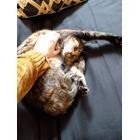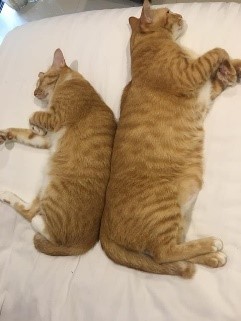by Sarah Norek
I love reading fiction. I love being read fiction. Some of my favorite kid memories are me in my bed watching stories my mother read form and shift inside my brain. Fiction has fed me for a long, long time. It’s offered escape, provided comfort, consumed me with discomfort, and shown me structures for narratives I wouldn’t have known otherwise. And, I think it’s an interesting thought experiment to explore how it shapes moves I make and perspectives I have in my role here at OSU. Because it’s not non-fiction that I’m using to learn more about a topic, or to grow my skills as a communicator or facilitator or supervisor, or to deepen my understanding on a key topic (though I do engage with this kind of reading, too). But the fiction I read can still offer insight into those areas.
Reading fiction has…
1… informed my email voice. I read, and listen to, as many books as I can, and the cadence and rhythm and sentence structures I’m exposed to inherently inform the way I approach written communication with others. I communicate with colleagues and a lot of students. And in this communication, I need to inform and convey care, or leadership, or both, and more. Do my sentences get too long sometimes? 100%. But the bones and tone and voice are there and have been informed and supported in their development by the stories I’ve consumed.
2…girded my reflection. As I like to read, so too do I like to write. And, in particular, I love an exploratory free-write. While free-writing I’m often reflecting, and these reflections help me explore what might be going on for me at work that I’m not necessarily voicing. I find it so much easier to write than to speak! Reflection has led to realizations about boundaries, support, connections, and more. It’s offered a container to puzzle through challenges and try out solutions. Is fiction involved? Sometimes. Or maybe all the time in that my personal narratives are informed by the narratives I’ve read, if not in terms of content, then perhaps in terms of flow and the invitation to engage in free-association, which can make things an adventure and also offer avenues for resolutions I might not have entertained otherwise.
3…offered points of connection with others. This feels like one of the most consequential to my work-work, even though it’s grounded in non-work. I love talking about fiction and novels or story collections being read. I love to share and hear about books and to process narratives and characters with colleagues. I get to learn about their experiences as readers, and also about them as humans, and I feel like (and I hope they do too, but no pressure… 😊) our relationships become richer because of these shared fiction experiences, which then further our work-work together too.
4…given me multiple opportunities to learn about experiences different from my own (and, to read similar experiences or thinking in others and feel less alone). I’m reading characters who hold different identities than me and finding authors whose backgrounds and experiences may overlap with mine, but also may diverge quite a bit. Am I learning strategies for supporting others and to better recognize processes and structures that have inequitable impacts on students? Maybe not explicitly, but I do think that by choosing to read a variety of books and authors I have the opportunity to apply learning and thinking I’ve done within academia to fictional spaces, and to find ways I’ve developed and also gaps in understanding I still have.
5…humbled me. I used to have a lot of strong feelings about romance novels. I used to have a lot of biases against them and what I assumed was their writing. And I was challenged in these biases and misconceptions by first one book, then another, then another, as I listened and thought, wow, what a fabulous description, or, good grief, what a gorgeous sentence. Now, these are books and authors I seek out. It may seem small, but it’s an instance of me getting to practice changing my perspective. It feels low stakes, but practice is practice and informs my ability to walk into more challenging conversations, or more divisive or contentious discussions, and to bring that experience of being open to changing my thinking and interested in listening to others.
I write all this not to imply that everyone should go and read a bunch of fiction now (but, totally, everyone should definitely go and read some fiction right now, and if you want to talk about books and what you like to read or what you recommend or what we’ve both read, surprise!, definitely let’s connect), but to reflect on how this act (reading) and this form (fiction) have played a part in my being who I am and what I do in my work at OSU. It’s not a connection I would’ve made naturally (thanks for the nudge, Marjorie!), but I think that’s maybe what I’m getting at – what are the things you love outside of work and how do they shape who you are and what you do at work? We’re complex! Comprised of so much. And as much as we may compartmentalize, what might happen when we select a non-work compartment to see what it means to the work that we do?










